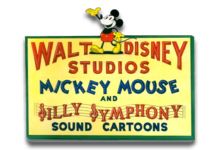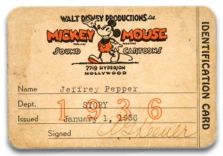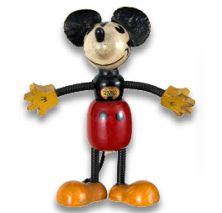The Fox and the Hound seems to exist just off the radar. It is a fine and commendable film, but one that is rarely focused on, either by Disney fans or the Disney Company itself. Disney Home Entertainment, pausing briefly amidst its aggressive push into 3D Blu-Ray conversions, ported The Fox and the Hound into a new high-def format, and I in turn took the opportunity to revisit a film that I hadn't seen in a least a decade or more.
The Fox and the Hound seems to historically bridge two significant eras of Disney feature animation. It was released in 1981, almost midway between the post-Walt xerography years and the renaissance of the 1990s. It is notable for combining the talents of studio veterans such as Ollie Johnston, Frank Thomas and Woolie Reitherman with then promising newcomers including Glen Keane, Randy Cartwright and Ron Clements. On the surface, it is a more polished film than predecessors such as Robin Hood and The Rescuers, and at times seems to almost achieve the artistic beauty of early classics such as Dumbo and most especially Bambi. It was an enormous commercial success for its time and context, a fact that became largely overshadowed when Disney animated fare began to achieve astronomical successes a decade later with Beauty and the Beast, Aladdin and The Lion King.
In 1981, I was a young college student and aspiring entertainment writer, just a few years into a more academic study of Walt Disney and Disney animation. At that time, I welcomed The Fox and the Hound as a very encouraging sign that Disney animation still had some life in it yet. We would have to weather the controversial and inconsistent Black Cauldron before seeing the renaissance begin to blossom with Great Mouse Detective and The Little Mermaid. Thus, Tod and Copper became the unlikely precursors of an industry that would literally explode in the final decade of the twentieth century.

Unfortunately, at least from a marketing standpoint, the Walt Disney Company has invested little historical significance to the film, especially as it relates to its most recent home entertainment incarnation. Though upgraded to high definition Blu-ray, it is a generally bare-bones affair. A combination 3-disc Blu-ray and DVD, the Blu-ray disc includes only one bonus feature, the very brief Unlikely Friends, which is nothing but a quickly assembled montage of clips from Disney animated features mixed with footage of "real-life" unusual animal friendships. It is hardly notable, even to the younger set to which it is obviously directed. The standard DVD offers the same minimal features as the previous 2006 edition, the highlight of which was a meager six-minute making-of vignette. To balance out this startling lack of content, the marketeers decided to throw in The Fox and the Hound II, the film's rather misguided and unremarkable direct-to-video sequel. John Lasseter had any number of good reasons for abandoning the controversial direct-to-video films and The Fox and the Hound II was likely one of them. It is a visually jarring mix of traditional and wholly inappropriate CG animation, combined with a story that relates in almost no way to the original film. (A group of howling dogs aspiring to be an act at the Grand Ole Opry?)
In the end, this recent edition is a purchase for the Disney Blu-ray collector and nothing more. It appears that Tod and Copper will continue to remain on the lower tiers of the Disney canon, at least as far the current generation of Disney executives is concerned.







































